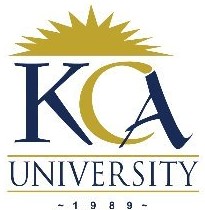
UNIVERSITY EXAMINATIONS: 2020/2021
EXAMINATION FOR THE DEGREES OF BACHELOR OF SCIENCE IN
APPLIED COMPUTING/ BACHELOR OF BUSINESS INFORMATION
TECHNOLOGY
BIT 2107/BBIT 1207: OBJECT ORIENTED ANALYSIS AND DESIGN
FULLTIME/ PART TIME/DISTANCE LEARNING
DATE: DECEMBER, 2021 TIME: 2 HOURS
INSTRUCTIONS: Question ONE IS COMPULSORY, Choose TWO OTHER Questions
QUESTION ONE (20 marks) Compulsory
(a) Outline three limitations of the structured approach to software development.
(3 Marks)
(b) Define the following object oriented concepts:
(ii) Guard condition
(iii) Pre-condition
(iv) polymorphism
(v) Abstract data type
(vi) message passing (5 Marks)
(c) Explain the main stages involved in object oriented software development. (3 Marks)
(d) Using appropriate notations, discuss the following components of a use case diagram,
giving an example of each one of them
(i) Actor
(ii) Use case (2 Marks)
(e) (i) Define the term class as used in object orientation. (1 Mark)
(ii) With the use of a diagram, explain the main parts of a class diagram. (3 Marks)
(iii) Write an example of program in C++ to show how a class declaration is achieved.
(3 Marks)
QUESTION TW0 (15 marks)
a). Differentiate between the following class relationships:
i) Generalization and specialization
ii) Aggregation and composition
iii) Association and realization (3 Marks)
b). Define the term multiplicity, giving any three examples of multiplicities (3 Marks)
c). Read the following carefully then answer the questions that follow:
“Nurses work on a particular ward. Doctors are assigned a number of patients and during
their rounds visit a number of different wards. If a doctor needs advice he/she may consult
with a specialist consultant regarding a particular patient. The specialist may see the patient.
Specialists are basically senior doctors.”
Identify suitable classes and draw the corresponding class diagrams that include appropriate
relationships and multiplicities. Justify each of the relationships identified. (9 Marks)
QESTION THREE (15 marks)
a). Describe the role of interaction diagrams in object-oriented design ( 2 Marks)
b). Sequence and collaboration diagrams are examples of interaction diagrams. Briefly
discuss the differences between these two types of diagrams (6 Marks)
c). (i) Outline the role of activity diagrams in Object Orientation (2 Marks)
(ii) With the use of suitable notations, explain the functions of any five components
of an activity diagram (5 marks)
QUESTION FOUR (15 marks)
(a) Define the term Unified Modeling Language (UML) and describe its main components.
(4 Marks)
(b) (i) Explain the benefits of the Unified Software Development Process
(USDP). (4 Marks)
(ii) Using a diagram discuss in details, the main phases of USDP. (5 Marks)
(c) State the difference between an activity and an action in UML. (2 Marks)
